
Seakeeping_1_4
.pdf
Odessa National Maritime Academy |
Theory and Ship's Construction Department |
CONTROL OF
SEAKEEPING
Igor F. Davydov, PhD, Associate Professor
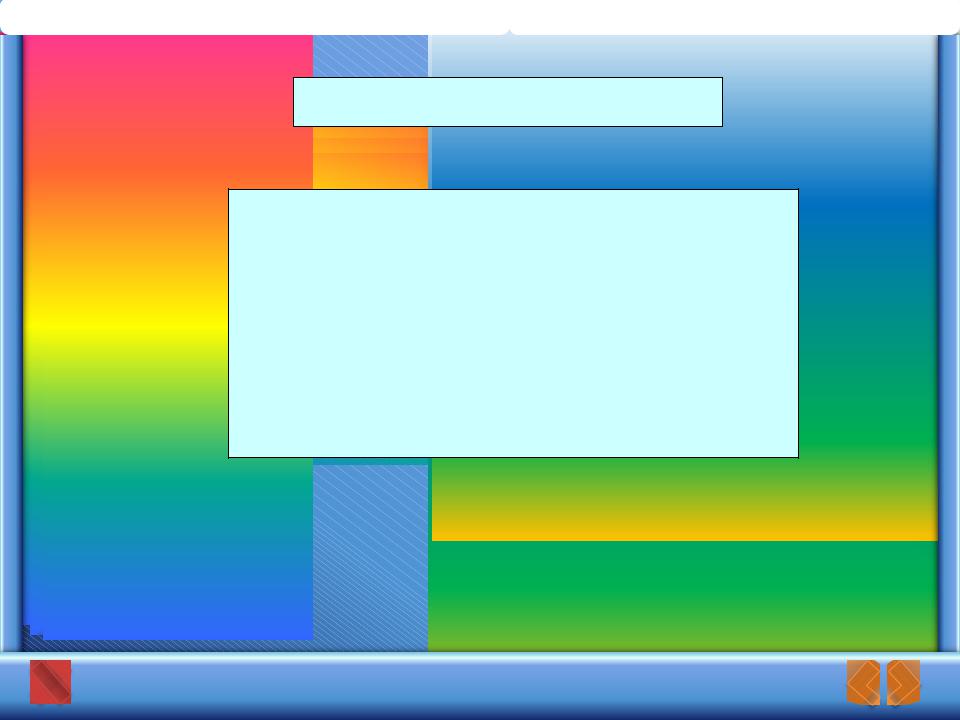
• Odessa National Maritime Academy |
Theory and Ship's Construction Department |
Main seakeeping qualities:
I.Floatability
II.Stability
III. Damage trim and stability (floodability)
IV. Ship’s strength
V. Ship resistance
VI. Ship propulsion
VII. Ship motion
VIII. Manoeuvrability
CONTROL OF |
2 |
|
SEAKEEPING |
||
|
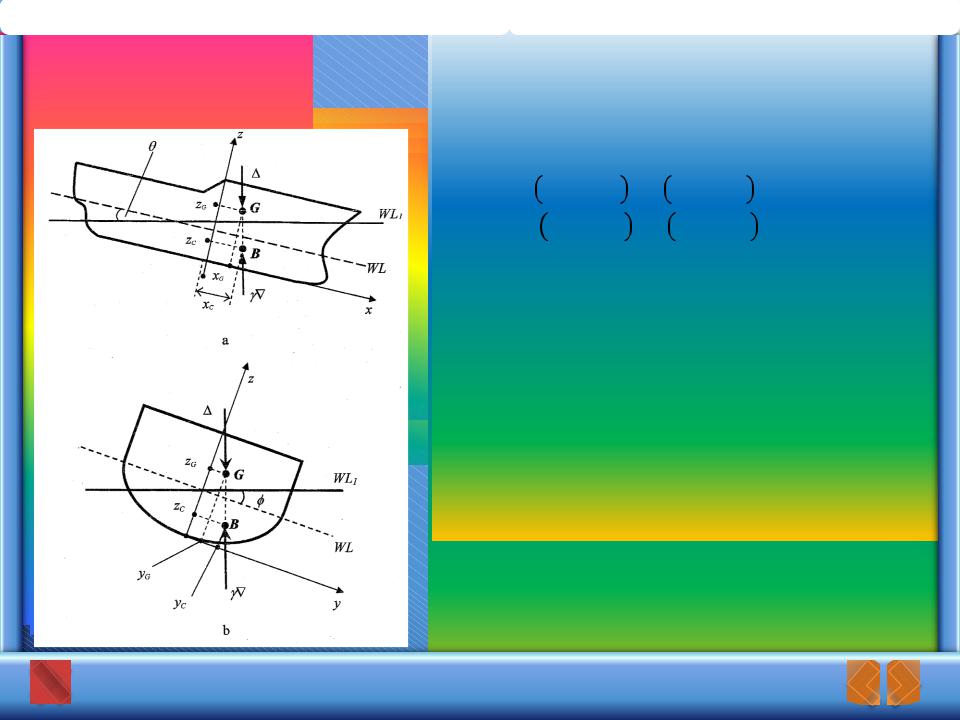
• Odessa National Maritime Academy |
Theory and Ship's Construction Department |
Ship’s equilibrium position under still water condition and equilibrium equations:
Where:
, ,, ,
|
|
∆= ; |
|
||
|
− |
= |
|
− |
Ψ; |
|
|
|
|
|
|
|
− |
= |
|
− |
Θ |
|
|
|
|
|
|
–are coordinates of the center of buoyancy;
–are coordinates of the center of gravity.
CONTROL OF |
3 |
|
SEAKEEPING |
||
|
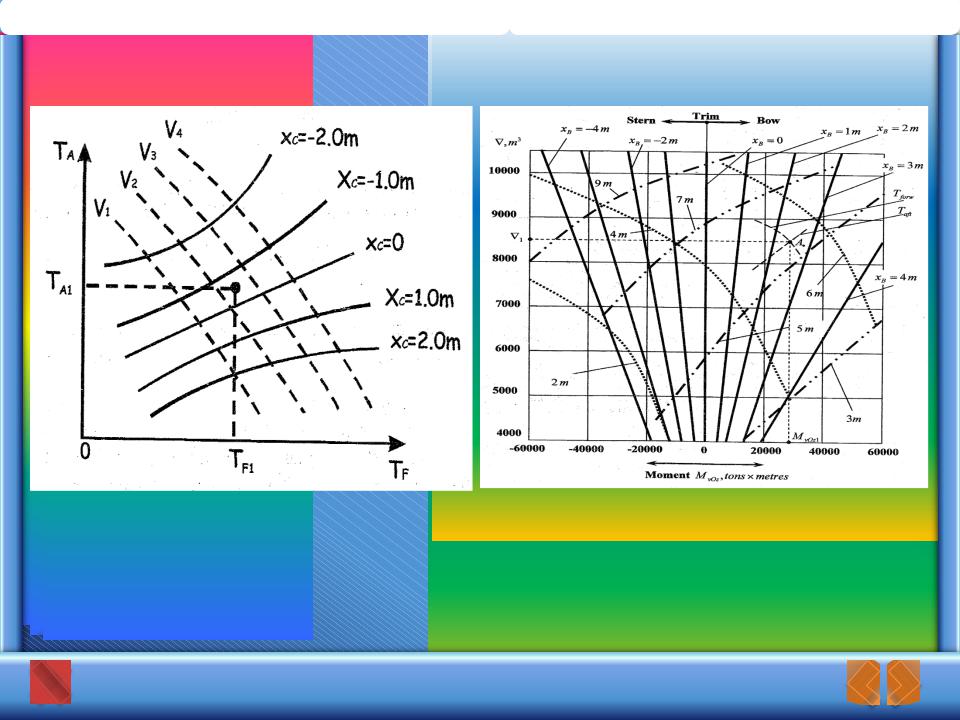
• Odessa National Maritime Academy |
Theory and Ship's Construction Department |
Types of trim diagram
Firsoff diagram |
Peterson diagram |
CONTROL OF |
4 |
|
SEAKEEPING |
||
|
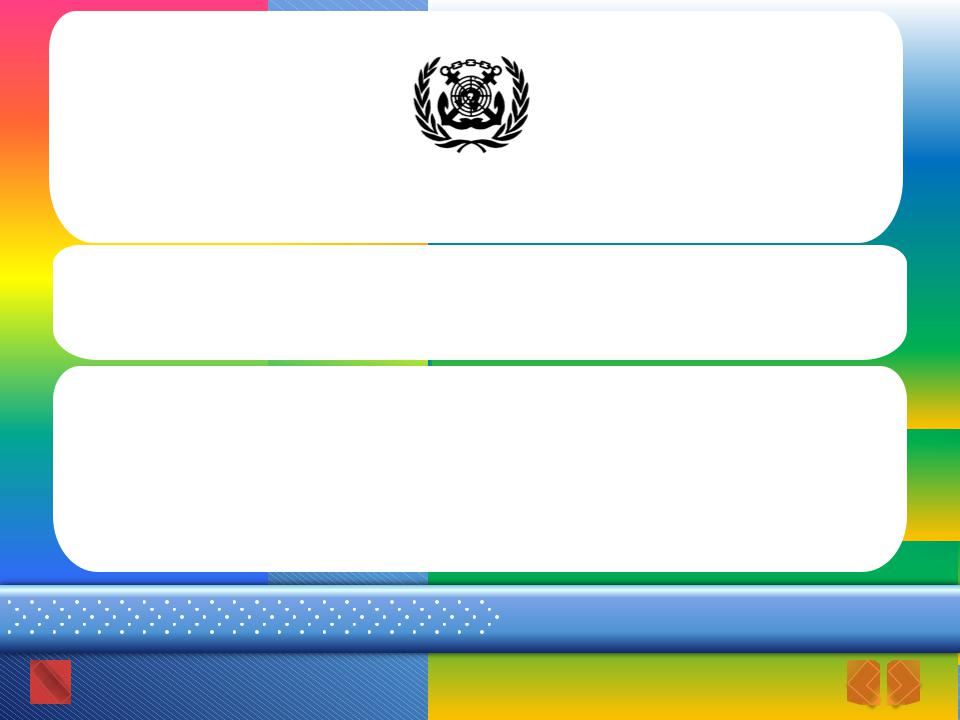
INTERNATIONAL MARITIME ORGANIZATION
IMO
Stability Requirements
INTERNATIONAL CODE ON INTACT STABILITY, 2008
(2008 IS CODE)
RESOLUTION MSC.319(89) (adopted on 20 May 2011)
General criteria
1.Criteria regarding initial stability
2.Criteria regarding righting lever curve properties
3.Severe wind and rolling criterion (weather criterion)
5

IS CODE CONTAINS INTACT STABILITY CRITERIA FOR THE FOLLOWING TYPES OF SHIPS AND OTHER MARINE VEHICLES OF 24 M IN LENGTH AND ABOVE, UNLESS OTHERWISE STATED:
.1 cargo ships;
.2 cargo ships carrying timber deck cargoes;
.3 passenger ships;
.4 fishing vessels;
.5 special purpose ships;
.6 offshore supply vessels;
.7 mobile offshore drilling units;
.8 pontoons; and
.9 cargo ships carrying containers on deck and containerships.
GENERAL CRITERIA
IMO
Stability
Requirements
All criteria shall be applied for all conditions of loading.
Free surface effects shall be accounted for in all conditions of loading.
Each ship shall be provided with a stability booklet, approved by the Administration, which contains sufficient information to enable the master to operate the ship in compliance with the applicable requirements contained in the Code.
Each ship shall be provided with a stability booklet, approved by the Administration, which contains sufficient information to enable the master to operate the ship in compliance with the applicable requirements contained in the Code. If a stability instrument is used as a supplement to the stability booklet for the purpose of determining compliance with the relevant stability criteria such instrument shall be subject to the approval by the Administration
6

Criteria regarding initial stability
IMO
The initial metacentric height GM0 shall not be less than 0.15 m. Stability
Requirements
Criteria regarding righting lever curve properties
1The area under the righting lever curve (GZ curve) shall not be less than 0.055 metre-radians up to ϴ = 30° angle of heel and not less than 0.09 metre-radians up to ϕ = 40° or the angle of down-flooding ϴf, if this angle is less than 40°. Additionally, the area under the righting lever curve (GZ curve) between the angles of heel of 30° and 40° or between 30° and ϴf, if this angle is less than 40°, shall not be less than 0.03 metre-radians.
2The righting lever GZ shall be at least 0.2 m at an angle of heel equal to or greater than 30°.
3The maximum righting lever shall occur at an angle of heel not less than 25°. If this is not practicable, alternative criteria, based on an equivalent level of safety, may be applied subject to the approval of the Administration.
ϴf is an angle of heel at which openings in the hull, superstructures or deckhouses which cannot be closed weathertight immerse. In applying this criterion, small openings through which progressive flooding cannot take place need not be considered as open.
7

IMO
Stability
Requirements
Severe wind and rolling criterion (weather criterion)
The ability of a ship to withstand the combined effects of beam wind and rolling shall be demonstrated, with reference to figure presented below as follows:
.1 the ship is subjected to a steady wind pressure acting perpendicular to the ship’s centreline which results in a steady wind heeling lever (lw1);
.2 from the resultant angle of equilibrium (ϴ0), the ship is assumed to roll owing to wave action to an angle of roll (ϴ1) to windward. The angle of heel under action of steady wind (ϴ0) should not exceed 16° or 80% of the angle of deck edge immersion, whichever is less;
.3 the ship is then subjected to a gust wind pressure which results in a gust wind heeling lever (lw2); and
.4 under these circumstances, area b shall be equal to or greater than area a, as indicated in figure below:
8
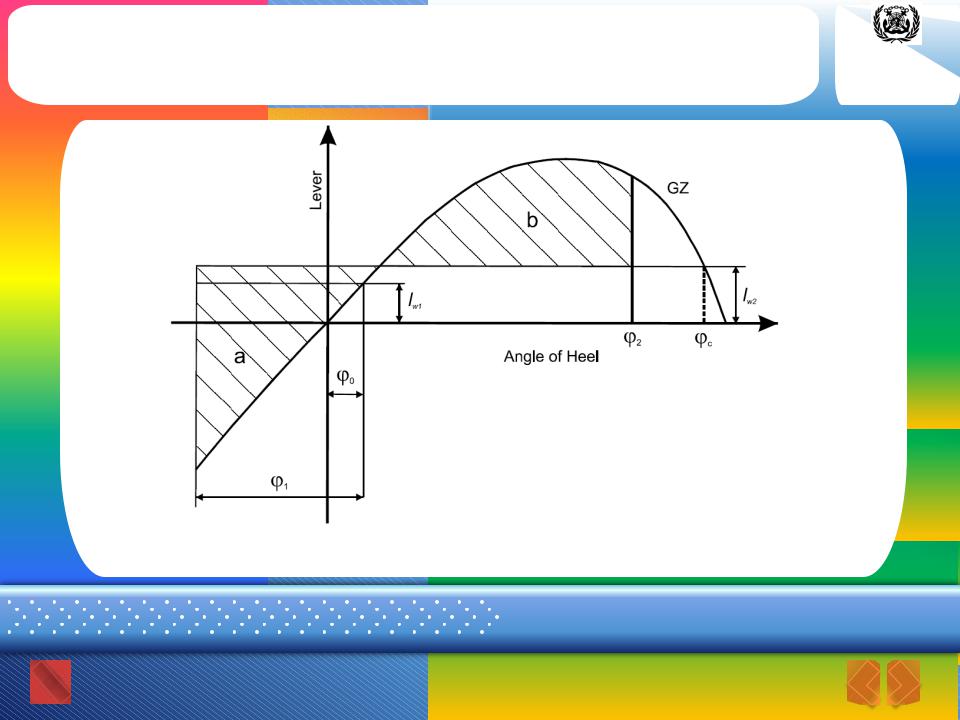
IMO
Stability
Requirements
Figure Severe wind and rolling
9

IMO
Stability
Requirements
where the angles in figure are defined as follows: ϕ0 = angle of heel under action of steady wind
ϕ1 = angle of roll to windward due to wave action ϕ2 = angle of down-flooding (ϕf) or 50° or ϕc, whichever is less,
where:
ϕf = angle of heel at which openings in the hull, superstructures or deckhouses which cannot be closed weathertight immerse.
In applying this criterion, small openings through which progressive flooding cannot take place need not be considered as open
ϕc = angle of second intercept between wind heeling lever lw2 and GZ curves.
10 

